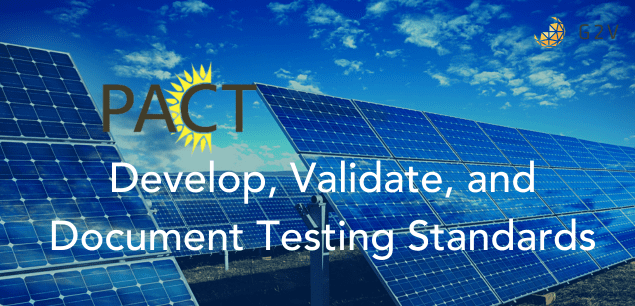Novel technology, whether disruptive or complementary, doesn’t simply arrive on the world stage fully formed.
It requires thorough study, characterization, and standardization if they are trying to break into an established field. This is necessary for any potential users, customers, or investors to have enough trust and confidence in the integrity of the technology to be willing to risk investing.
How Do You Build Trust in Novel Solar Cell Technologies?
The explosion of interest in perovskite-based semiconductor materials used in solar energy generation technology is one of those situations. Despite perovskite solar cells being less than 20 years old and only recently performing well enough to supply specific commercial applications outside the lab, they have garnered considerable interest.
Promising high efficiency in a thin, flexible format capable of being manufactured continuously with equipment that is already industry standard.
For example, types of perovskite manufacturing may include various roll-to-roll deposition loops through to electrodeposition tanks, and being able to utilize already existing technology to build a new industry is something that always sits at the top of a venture capitalists’ Christmas wishlist.
Enter PACT, the Perovskite PV Accelerator for Commercializing Technologies group and VIPERLAB (Fully Connected Virtual And Physical Perovskite Photovoltaics Lab).
Their goal is to lay the groundwork necessary to blaze the trail for the commercialization of perovskite solar energy technology.
Perovskites have several barriers left to overcome before becoming commercially viable.
Problems with long-term stability, a lack of standardization in formulation, and uncertainty about long-term effects on the surrounding environment due to the use of certain heavy metals. These existing issues make the pursuit of commercialization a daunting task for hopeful entrepreneurs and established producers alike.
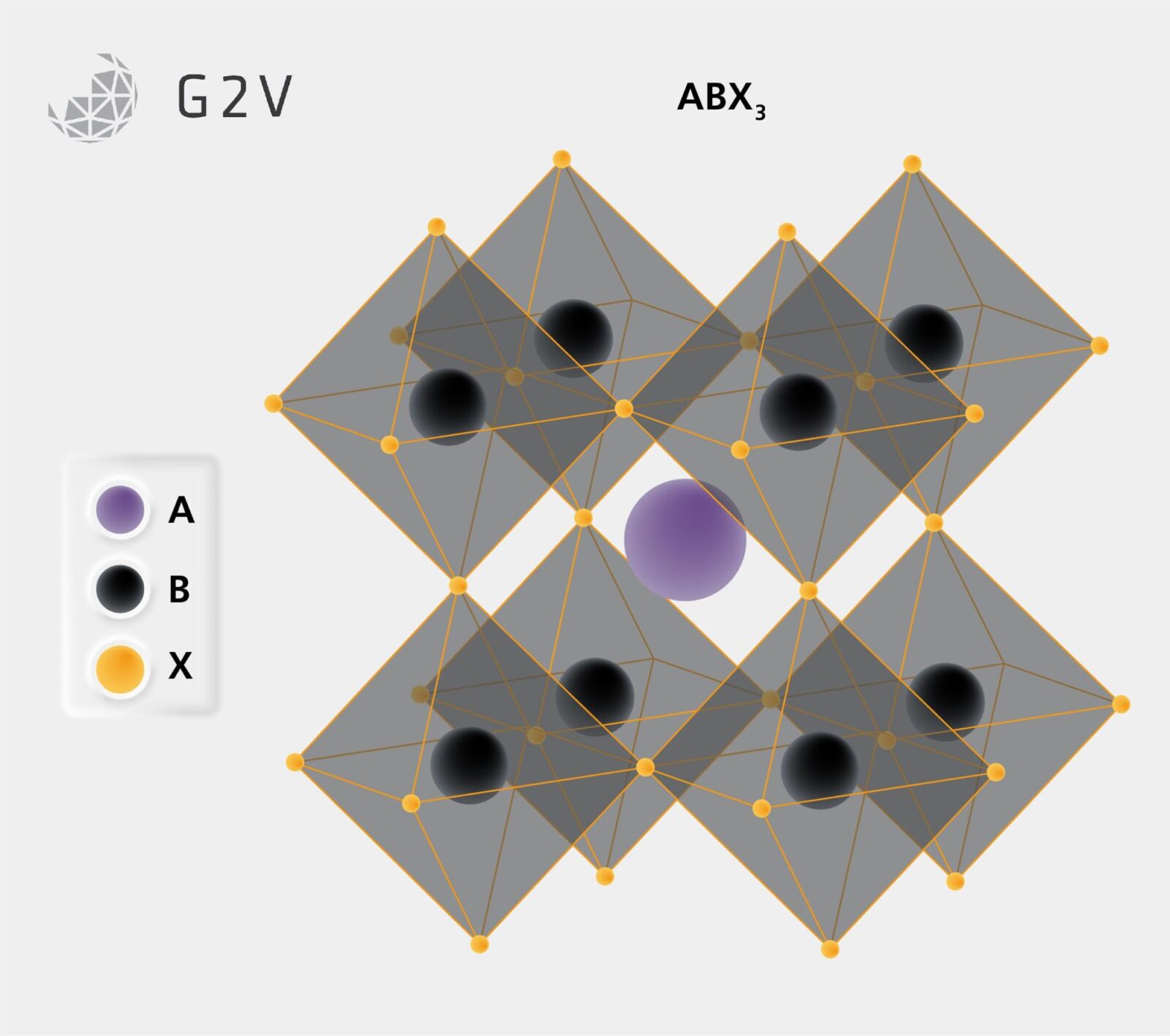
The market for perovskite solar cells technology was valued between $300-600 million USD in 2022 and projected to rise at a Compound Annual Growth Rate (CAGR) between 12.7% and 70.1% between 2023 and 2028. This large potential spread of growth rates is evidence that there is still a great deal of uncertainty surrounding the technology. To reduce the spread of those CAGR values and be able to make confident predictions about the growth potential for perovskites, there needs to be more trust that perovskites will be able to live up to expectations.
How can PACT and VIPERLAB accumulate enough data for the necessary trust in perovskite solar energy tech?
The first and most important answer is that they don’t do it alone.
Who Are the Perovskite PV Accelerator for Commercializing Technologies (PACT) Members?
Historically, a pact is an agreement between multiple parties to achieve a goal, and this PACT is no different. Who makes up the PACT and what have they agreed to do?
From the purpose statement by Sandia National Laboratories in Albuquerque, New Mexico, PACT works to:
“Develop, validate and document testing standards capable of accurate characterization of field performance and degradation prediction [of perovskite-based solar technology].”
Sandia National Laboratories is the lead group within PACT and collaborates with other national laboratory partners, some of which are long-time customers of us at G2V:
- The National Renewable Energy Laboratory (NREL), The leading National Lab in the field of clean energy research commonly known for being at the forefront of research into renewable energy technology capability and design. Outside academia and industry collaboration, it is a leader in science communications. One of the more notable examples is the Solar Cell Efficiency chart we referenced in our perovskite article.
- Los Alamos National Laboratory (LANL), commonly known for its historical work with, let’s call it, “a practical application of high energy physics” in WWII. Today they provide a wealth of technical ability and capability for testing materials’ behaviour in environments ranging from naturally occurring to the extreme.
- Stanford Linear Accelerator Laboratory (SLAC) is a facility devoted to using high-energy physics to probe the intrinsic properties of materials and devices that help improve our world by shining a light on the inner workings of everything from batteries to solar cells to structural materials and beyond.
Outside of national laboratories, PACT also has several member Universities.
- Stanford University’s Dauskardt Group is investigating open-air plasma deposition methods for high-efficiency perovskite solar devices and how solar module reliability correlates to differences in layer adhesion and delamination processes.
- The University of Washington, home to the Clean Energy Institute, has published research on the prediction of degradation pathways of perovskites using machine learning and is also responsible for the Washington Clean Energy Testbeds, an advanced testing and fabrication facility focused on energy production, storage, and integration technologies.
- At the University of North Carolina at Chapel Hill, the Huang Research Group has published dozens of papers about processing and design advancements for perovskite cells and devices since 2020.
- And the University of Toledo, where the Wright Center for Photovoltaics Innovation and Commercialization has conducted perovskite solar research since 2015.
Beyond national labs and universities, more industrially-focussed groups working in PACT also bring their expertise and capability to the table. These include companies like:
- Black and Veatch, a prestigious engineering firm specializing in water infrastructure improvements to help communities and governments meet their sustainability goals, including desalination and waste treatment.
- Electric Power Research Institute, an independent research, development, and deployment non-profit working to improve understanding and access to electricity for multiple applications across society.
- CFV Labs, a solar energy testing and validation laboratory which is in itself a joint venture between Fraunhofer Institute for Solar Energy Systems (ISE), Fraunhofer USA Center for Sustainable Energy Systems (CSE), VDE Testing and Certification Institute, and the CSA group.
Collaboration between these high-calibre groups is a powerful tool for producing reliable and reproducible data on a topic.
The benefit of cross-collaboration between these experts allows for gathering input from diverse groups and maintaining close working relationships, the goal is to cover any knowledge gaps and ensure the rigour of any assumptions made during the project.
Maintaining a collaborative relationship during the investigation and research makes it easier for PACT to confidently say that the eventual standards for testing and validating the behaviour and ability of perovskite-based solar technologies are correct and reproducible.
Are There Other Similar Efforts to PACT?
With perovskites becoming such a significant topic of interest in the global solar photovoltaics field, PACT cannot be the only group pursuing the formalization of standards for commercializing this exciting solar energy technology. As PACT is primarily located in North America, groups in other parts of the world must also be pursuing the same goal.
As we mentioned earlier, the most prominent one in the EU earlier, VIPERLAB, an EU-based consortium dedicated to:
VIPERLAB: The EU Centered Consortium of Participant Groups
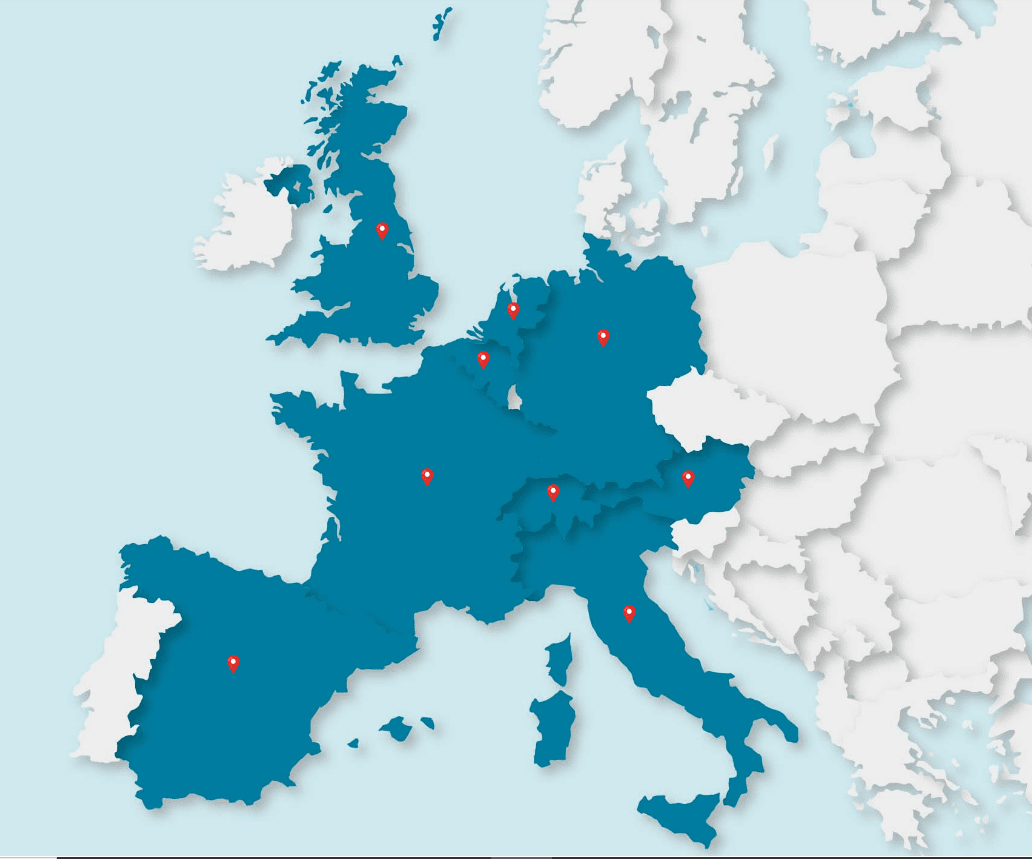
As you can see, VIPERLAB has members all across the EU and just like PACT, some of them are customers of ours.
We here at G2V are proud to be able to assist both VIPERLAB and PACT in pursuit of their goals.
The list of VIPERLAB members is just as illustrious as one might expect, spanning a similar gamut to their North American contemporaries with members from:
- Government labs/Research Institutes: Helmholtz-Zentrum Berlin für Materialien und Energie GmbH (HZB) and Centre Suisse d’Electronique et de Microtechnique (CSEM) are titans of the renewable energy industry and listing their accomplishments would require entire articles for each of them. For example, they both have held the record for the world’s most efficient solar panels in multiple technologies, multiple times.
- Universities such as Swansea University and Università Degli Studi Di Roma Tor, Vergata (UNITOV), which run SPECIFIC, a UK Innovation and Knowledge Center, and the Center for Hybrid and Organic Solar Energy (CHOSE), a conglomerate of research and production laboratories with several business spinoffs, respectively. École Polytechnique Fédérale de Lausanne (EPFL) is also represented here beyond their relationship with CSEM listed above with their laboratory of photovoltaics and thin film electronics of IEM (PV-Lab), which was founded almost 40 years ago.
- Industrial research and development groups such as France’s Commissariat à l’énergie atomique et aux énergies alternatives (CEA), the Austrian Institute of Technology (AIT), and Spain’s Centro Nacional de EnergÍas Renovables (CENER).
If you would like to learn more about who the members of VIPERLAB are and what their goals and projects within VIPERLAB are in more detail, you can find them listed here on the VIPERLAB website.
Distance may separate the members of VIPERLABs, but their drive to move thin film solar from the lab to manufacturing unites them.
The Collaborative Differences of VIPERLAB and PACT
VIPERLAB is not following the same path as PACT. The goals of these two groups are aligned, and they hope to bypass the theme of Robert Frost’s The Road Not Taken by exploring as many paths as possible collaboratively so that they will not have any regrets about missed opportunities.
PACT is pursuing the work of determining how to craft standards to assist those researching perovskite technologies in validating the behaviour of their devices.
VIPERLAB instead comes from the direction that if they can produce a commercially viable perovskite device, then any standards will predominantly form around that first mover as it will draw the most scrutiny.
VIPERLAB and PACT both aim to commercialize perovskite solar cell technologies being used on the open market and in fair competition with traditional photovoltaics.
The difference is the path chosen to reach that goal.
That’s a good thing!
Collaboration between the two groups can occur with an improved likelihood of providing unique viewpoints or discoveries that can assist the other and elevate the quality of any output from either group.
Supporting all of these groups is not a small task. Allowing these groups to pursue these topics for a reasonable amount of time can take millions of dollars.
So how do they ensure they can operate long enough to achieve their goals?
Who Is Investing In PACT & VIPERLAB?
The United States Department of Energy Solar Energy Technologies Office (SETO) created the PACT group in 2021 with two grants to NREL and Sandia National Labs of a combined total of $14M to create a “Validation and Bankability Center.”
All told, through two different funding programs, the members of PACT have received approximately $19.45M to pursue their efforts to bring perovskite technology to the level where it can be commercially viable.
VIPERLAB shares a similar story, founded on June 1, 2021, by a grant from the EU Horizon 2020 project. Horizon 2020 funded the various members of the consortium individually to pursue their chosen research and collect all the produced data centrally within the care of VIPERLAB.
This amount dispensed came to just over 5.5 million euros to support it through its planned lifespan until November 2024.
What Are Standards And Why Are They So Important For PACT, VIPERLAB, And Perovskites In General?
According to the US Department of Energy, standards are
“A set of criteria within an industry relating to the standard functioning and carrying out of operations in their respective fields of production.[…] it is the generally accepted requirements followed by the members of an industry. It provides an orderly and systematic formulation, adoption, or application of standards used in a particular industry or sector of the economy. Industry standards vary from one industry to another. Industry standards facilitate global as well as domestic competitiveness. It is a crucial tool for developing and meeting industry goals.[…] Standardization serves as a quality check for any industry.”
Whiteford, S. (2016). Real Property Asset Management. United States Department of Energy.
Compliance with a standard gives customers pronounced confidence that their product will meet specific performance requirements.
A set of standards covers the device/material/product behaviour under as many parameters as practical and is built on specific protocols describing how the comparative testing for compliance should be done to ensure equivalency no matter who is performing the tests.
Protocols are the procedures used for each specific standard to ensure that all tested devices are evaluated equivalently. They can vary from simple visual inspections at regular intervals to accelerated degradation/aging testing, exposing the devices to damaging conditions such as high humidity, high or cryogenic temperatures, or rapid cycling of voltages, current or temperature.
One relevant example of a protocol is the U.S. Dept. of Energy’s Accelerated Aging Testing applied to Si solar cell evaluation, also of interest for its applicability to perovskite lifetime stability testing.
Understandably, no one wants to test devices for their predicted operational lifespan to determine how likely they will operate for that expected period. So, effort is put into crafting standards that accurately predict long-term behaviour from short-term performance.
These standards are generated by performing more strenuous conditions such as higher heat, higher humidity, and higher applied voltage or current stresses a device beyond expected operating conditions.
Collecting data across multiple values for each variable allows researchers to construct correlations between each parameter’s causative degradation rates and determine whether those rates are predictable across the entire length of their expected lifespan and not governed by hidden thresholds.
The Accelerated Aging Testing protocols goes into much more detail about the requirements for making those correlations accurate and repeatable.
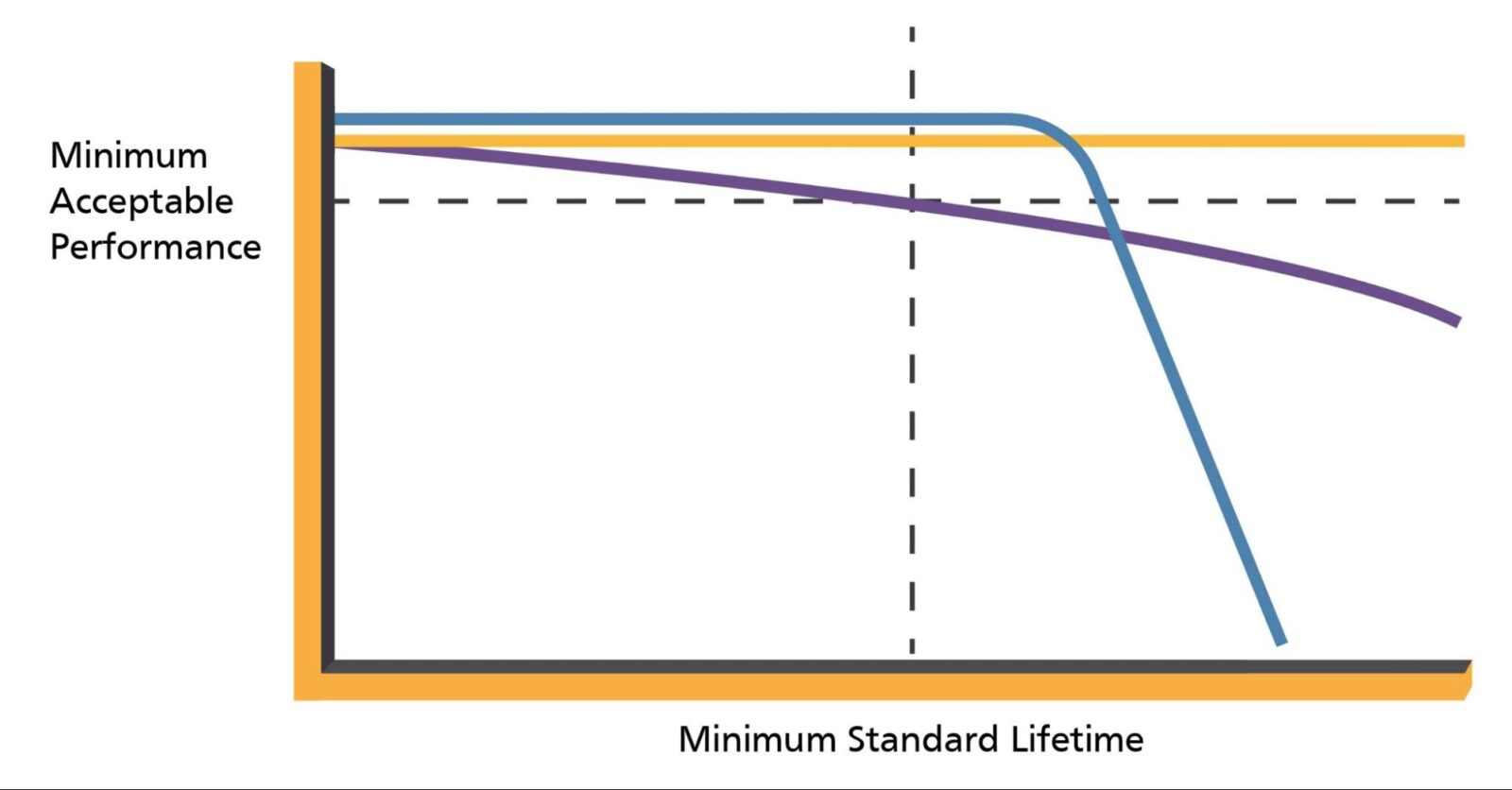
A good standard requires a comprehensive understanding of the devices’ behaviour and operating conditions, covering situations from the everyday to the worst the real world can produce while still remaining representative of everyday conditions.
If the testing protocols are too aggressive, they can lose their applicability to operational conditions (e.g. even in elevated temperature testing conditions for degradation testing, solar panels should never get hot enough to melt); or create a situation where one device architecture is treated preferentially, due to inherent properties benefiting operation in testing circumstances but without noticeable difference in standard operating conditions.
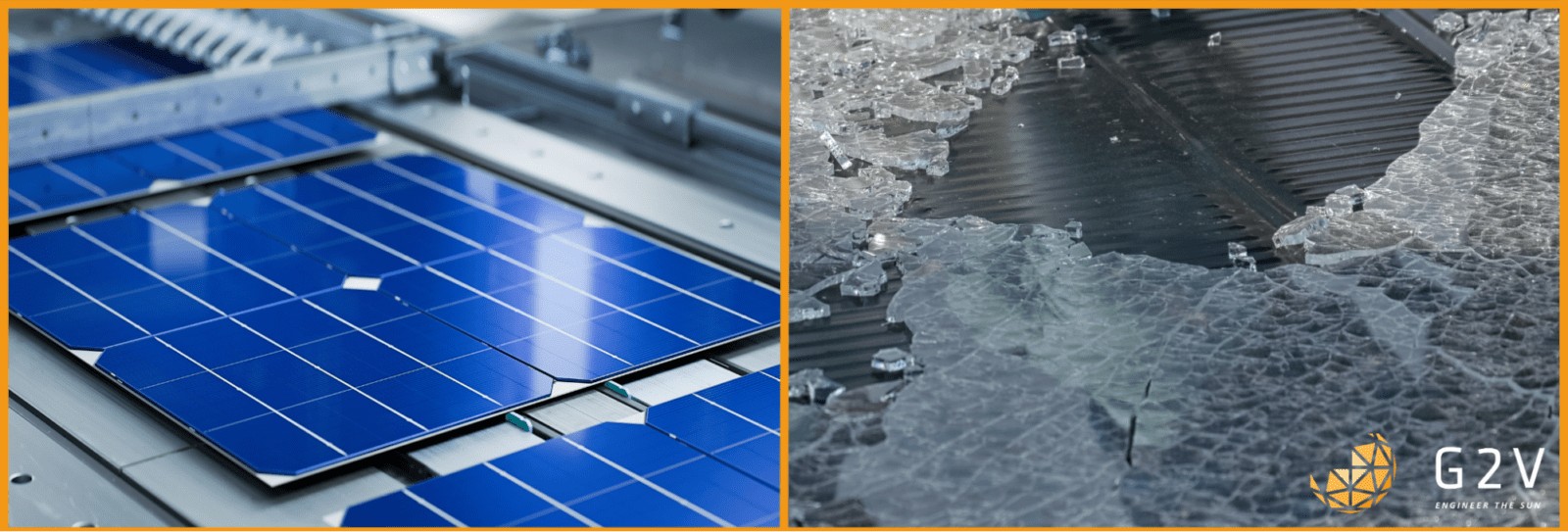
Overly stringent protocols can make standards useless for producing reliable and valuable data to compare and quantify in this manner.
It is essential to balance the standard’s requirements and protocols to provide accurate data for comparing different technologies performing the same job without requiring an entire operational lifetime of the item in question for testing.
PACT and VIPERLAB: Building Trust in Tomorrow’s Standards With Today’s Expertise
Traditional photovoltaics such as those based on a silicon or Copper Indium Gallium Selenide (CIGS) architecture have standards governing every aspect of their lifecycles:
- Their behaviour under various ordinary environmental circumstances
- How researchers and producers should collect that data
- What the requirements are for the observation of the devices during testing
- How owners and operators should manage their device’s condition to promote the safety of site operators, maintenance, and the general public
These applicable standards for current solar panels and solar cell technologies are IEC 61215, IEC 61730, IEC 60904-9, and IEC 60904-1, respectively.
Testing protocols such as the ones mentioned from the IEC standards provide researchers with reliable touchpoints to assess that their devices behave as expected and enable comparability against other devices of similar construction.
Nevertheless, it’s important to keep in mind that the differences in material behaviours do not necessarily translate perfectly across the differences between traditional solar cell technologies and novel perovskite materials.
Identifying these differences is necessary for creating standards for these new PV materials. Which is why PACT and VIPERLAB are working so hard to formalize processes for confirming how perovskites can and do perform whatever jobs we desire from them.
What Does The Future Hold For Perovskite Solar Cells?
The initial funding of PACT and VIPERLAB lasts until at least the middle 2024 and there is always potential for more investment to support their efforts. We here in 2023 are fortunate in being able to watch these innovative minds from the various collaborative groups shape the perovskite solar cell field and hope they can continue for many years to come.
As more publications about protocol recommendations are released, groups like VIPERLAB can improve their own results in producing novel perovskite formulations and devices. Using these nascent standards to compare their work against the rest of the field will ideally drive a positive feedback loop between production and reference.
As better devices are produced, the data to build the standards from will improve, producing higher quality and more reliable protocols and standards.
Perovskites have the potential to shift the landscape of solar power generation into forms beyond the best modern silicon solar cells.
Flexible and robust devices produced for a fraction of the price compared to the large and fragile current panels. Civilization will be able to use the light of the sun to improve our lives wherever the sun shines upon it.
And we at G2V can’t wait to see it all happen.
***
References:
https://rayleighsolartech.com/applications/
https://g2voptics.com/perovskite-solar-cells/#h.ctagb3yxvaoh
https://g2voptics.com/photovoltaics-solar-cells/
https://www.marketsandmarkets.com/Market-Reports/perovskite-solar-cell-market-253842189.html
IEC. (2016). 61730-1: PHOTOVOLTAIC (PV) MODULE SAFETY QUALIFICATION – PART 1: REQUIREMENTS FOR CONSTRUCTION
IEC (2020) 60904-1: PHOTOVOLTAIC DEVICES – PART 1: MEASUREMENT OF PHOTOVOLTAIC CURRENT-VOLTAGE CHARACTERISTICS
IEC. (2020). 60904-9: CLASSIFICATION OF SOLAR SIMULATOR CHARACTERISTICS.
IEC. (2021). IEC 61215-1: TERRESTRIAL PHOTOVOLTAIC (PV) MODULES – DESIGN QUALIFICATION AND TYPE APPROVAL. In 61010-1 © Iec:2001.
Khenkin, M. v., Katz, E. A., Abate, A., Bardizza, G., Berry, J. J., Brabec, C., Brunetti, F., Bulović, V., Burlingame, Q., di Carlo, A., Cheacharoen, R., Cheng, Y. B., Colsmann, A., Cros, S., Domanski, K., Dusza, M., Fell, C. J., Forrest, S. R., Galagan, Y., … Lira-Cantu, M. (2020). Consensus statement for stability assessment and reporting for perovskite photovoltaics based on ISOS procedures. Nature Energy 2020 5:1, 5(1), 35–49. https://doi.org/10.1038/s41560-019-0529-5
Schelhas, L., Makris, T., Khenkin, M., Case, C., & Muller, J. (2022, September 28). NPL – NREL – Pathways and Challenges of Reliability Testing for Perovskite Based Photovoltaic Devices. 8th World Conference on Photovoltaic Energy Conversion, Milan, Italy. Timestamp 1:16:00 – 1:16:35 https://slidemeet.openslideservices.com/WCPEC-8/session/9a7dcc12-8979-40eb-9db2-d81e19b54dfd
Stoddard, R. J., Dunlap-Shohl, W. A., Qiao, H., Meng, Y., Kau, W. F., & Hillhouse, H. W. (2020). Forecasting the Decay of Hybrid Perovskite Performance Using Optical Transmittance or Reflected Dark-Field Imaging. ACS Energy Letters, 5(3), 946–954. https://doi.org/10.1021/ACSENERGYLETT.0C00164/SUPPL_FILE/NZ0C00164_SI_001.PDF
Tillerson, J., McMahon, T., Quintana, M., Zweibel, K., & Ton, D. (2006). Accelerated Aging Tests in Photovoltaics Summary Report. https://www1.eere.energy.gov/solar/pdfs/pv_accelerated_aging_summary.pdf
Whiteford, S. (2016). Real Property Asset Management. United States Department of Energy. http://directives.doe.gov/directives-documents/400-series/0430.1-BOrder-c-chg2-adminchg
